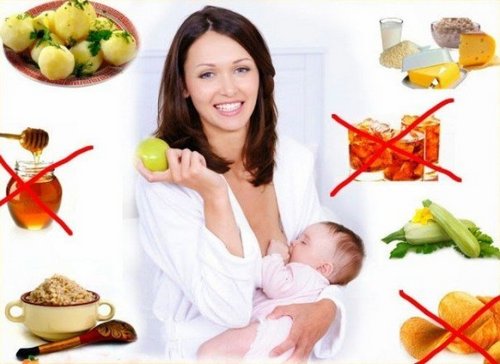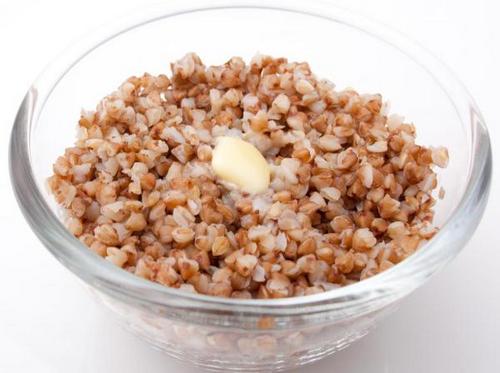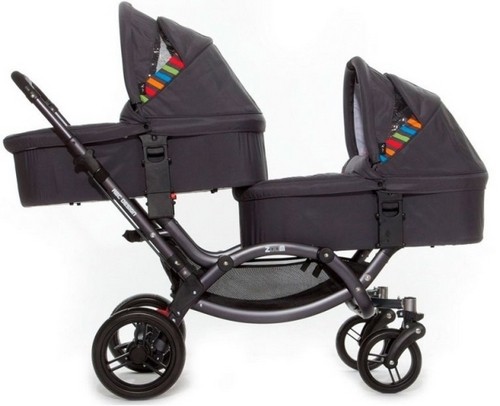For a full milk composition, a mother should receive protein, fats, carbohydrates, microelements, vitamins, and enzymes with food. The daily nutrition of a nursing mother should consist of 20% protein, 60% carbohydrate and 15% fat. In addition, a nursing mother needs a sufficient amount of fluid. The first six months of feeding, the maximum amount of milk is formed – up to 1 liter per day.
Dishes for nursing mothers should cover the need for liquid food and supply the required amount of substances.
The basis of nutrition is cereal soups and dairy products. They provide the necessary carbohydrates and proteins, liquid and bacteria to digest food. It is the bacterial composition that determines the digestibility of products, which means that their amount in the composition of breast milk.
In addition, dairy products supply calcium, which is necessary for the growth of bones of the baby and its ligamentous apparatus. If calcium is insufficiently supplied with food (or poorly absorbed), then the mother’s bones and teeth become a source of calcium.

Product List for Nursing Mom
It is recommended that a nursing mother eat daily:
- 200 g of animal protein (meat or fish);
- 150-200 g of cottage cheese or cheese;
- 1 liter of fermented milk products (fermented baked milk, whey, kefir or homemade yogurt);
- 1-2 eggs.
The meat for a nursing mother should be lean and boiled (steamed). In the first month of life, the intestines of the baby are colonized by bacteria. Therefore, it is possible that their number will be insufficient to digest a foreign protein (animal meat). Then allergic manifestations (rash) and indigestion (bloating and colic) are possible. Do not eat meat during the first days after childbirth, and then introduce it little by little. In order for the baby’s body to quickly adapt to new foods, give him probiotics – drugs with bifidobacteria and lactobacilli.
Mushrooms are a special type of food. It is a vegetable protein that is digested faster and better than animal meat. However, you can eat mushrooms while breastfeeding after the first month of the baby’s life and only those that have grown in a clean garden. The fact is that the mushroom is a medical orderly. It absorbs all the poisons around it (herbicides, environmental pollution, car emissions). Therefore, even an edible mushroom can be poisonous, and for a crumb – fatal.
Nuts – are considered an easily digestible protein. A nursing mother can eat raw and roasted nuts in the first month of her baby’s life. They supply not only protein, but also vegetable fat, trace elements and vitamins. This increases the nutritional value of milk without allergic reactions.
Is it possible for nursing mother sunflower seeds? Sunflower seeds, like nuts, are a vegetable protein of fast absorption. Therefore, eating them is not only possible, but also necessary. Important: seeds should not contain sweeteners, coloring additives and other “chemical components”. They cause an allergic reaction in the baby in the form of a rash, redness, peeling.
Milk and dairy products are the main source of bifidobacteria and lactobacilli. Probiotics (concentrated bacteria in sleeping form) can be given to crumbs. And mom should definitely eat cottage cheese, drink fermented baked milk, kefir, whey, as well as tea with milk. You can not eat condensed milk, this product contains sugar and preservatives. Therefore, in most children, condensed milk in mother’s milk causes an allergic rash.
Carbohydrates – the basis of the diet
Carbohydrates are the basis of the diet of a nursing mother. Carbohydrates are part of cereal products (cereals, soups, bread), vegetables and fruits. Cereals and soups are prepared from cereals.

Soups for nursing mothers are cooked on the basis of low-fat broth (poultry meat). During the first week of life, soups for mom are boiled on the water. After broths are introduced into the diet and possible allergic reactions are observed in the baby. If they are not there, increase the amount of broth in the menu, or switch to beef broth and add meat.
In the first month, do not eat muffin and pastry baking. All kinds of baking powder, palm oil and flavorings are not needed for your baby, they cause allergic rashes and anxiety. Eat plain bread and any cereal.
Vegetables and fruits – a source of vitamins
Vegetables and fruits are the main suppliers of fiber, vitamins, enzymes for digesting food. Fiber provides the movement of feces in the intestines. It absorbs toxic substances and cleanses the digestive tract. But often fruits and vegetables cause gas formation and nightly colic in infants. How to be Can I include vegetables and fruits in my mother’s diet while breastfeeding?
The diet of a nursing mother may include raw vegetables and fruits, but it is necessary to introduce them into the food in small portions. 1-2 weeks after giving birth, try adding an apple slice or a spoonful of cabbage salad to the menu. If your baby reacts well, no colic or rash occurs – increase the portion of vegetable food (little by little).
If his digestion does not cope with vegetable or fruit components, exclude them from the diet for a while.
What can a nursing mother eat in the first month of her baby’s life? During the first days and weeks, you can fearlessly eat baked vegetables. They retain the full range of nutrients, trace elements and contain less active vitamins and enzymes. Therefore, they do not cause gas formation in the intestine.
Apples or bananas
The traditional question is whether it is possible for a nursing mother to bananas, apples or other fruits does not have a clear answer. It is very individual. It is possible that for most children, bananas do not cause an allergic reaction, and your baby will react poorly. Or, on the contrary, everyone has a stomach ache after apples, and you can safely use this fruit.
Is it possible for a nursing mother to eat apples? It depends on two factors: the type of apple and how much the mother ate apples before pregnancy. This fruit contains pectin and fiber, which cleanse the intestines. If you ate little fruit and vegetables before giving birth, there are fecal deposits on the walls of your intestines.

Pectin actively dissolves them, and fiber stimulates their elimination. For you it’s good, for the baby it’s bad. Your body is cleansed of toxins, while they get into the blood, milk and cause colic, flatulence in the baby.
Such cleaning during feeding is not the best way to recover.
Peas and cabbage act in a similar way. They dissolve the existing feces and cause gas in the mother. At the same time, similar processes occur in the digestion of the child. Gasics are formed that cause pain and disturb sleep.
You can prevent gas formation when eating apples if you add baked apples to the menu. Heat treatment removes part of the biologically active substances, so baked apples do not cause bloating and gas formation in the intestine.
Also, carminative agents (tincture of chamomile or dill in a weak – hypotonic form) help to cope with flatulence in a baby. They help the baby to remove gaziki and “fart” without pain.
Overseas fruits and dried fruits
Can lactating mother have persimmons and oranges? These fruits do not grow in our regions; therefore, they are not staple foods. If you do not often eat persimmons during pregnancy, you should not experiment with breastfeeding. Persimmons and citrus fruits (oranges, tangerines) are a common allergen, and not only due to the natural dye, but also because of the presence of preservative residues in them, which process the skin of the fruit during transportation and long-term storage.

Also, be careful about dried fruits that are too beautiful and aromatic. Their external attractiveness indicates a preliminary processing process (soaking in sugar syrup, soaking in preservative additives). This applies to soft and tasty dried apricots, raisins, dates. Without fear, you can eat homemade dried fruits – dried apples, pears, plums.
The best fruits and vegetables to eat are those that grow in your area of residence.
What kind of fruits can a nursing mother (the list is indicative, you should consume any fruit a little and look at the reaction of your baby):
- Baked apples – from the first days of life. Raw apples – in the absence of colic in the baby.
- Pears – in the absence of a tendency to colic.
- Melons and watermelons home grown (they should not be fertilizers and nitrates).
- From overseas fruit – bananas.
Not recommended:
- Grapes (weakens the intestines), sometimes plums (also weaken).
- Citrus fruits (except lemon).
- Other overseas fruits: mango, kiwi, persimmon – are also not recommended.
Artificial Vitamins and Precautions
If your child does not respond well to raw fruits and vegetables, you need to take artificial vitamins.
Important: you need to choose their composition so as not to cause an allergic reaction in the baby.
Often advertised Multitabs cause too obvious an allergy, and the domestic Undevit is perfectly absorbed without a rash and redness.
What you can not eat nursing mother
The diet for nursing mothers excludes a number of products from the nutrition menu:
- All products that contain preservatives and dyes: sausages, canned food, processed cheeses, mayonnaises and ketchups, fast foods and McDonald’s. Read what is written as part of the products on the package. And if, in addition to a clear list, you see the designation of chemicals, feel free to leave the “product” on the store shelf. Neither you nor your baby need him.
- Confectionery sweets: cakes, ice cream, pastry. Firstly, they contain a lot of sugar and hard-to-digest confectionery fat, palm oil. Secondly, various flavor enhancers and baking powder are added to most confectionery and pastries. Do not experiment with your baby’s immune system. Nutritional supplements are one of the main causes of allergies in modern children.
- Chocolate (cocoa) and products containing it. In most cases, the infant is not absorbed and therefore causes a rash and redness.
The younger the child, the more restrictions are placed on the nutritional diversity of the nursing mother. Every month, the digestion of the child is replenished with new enzymes and bacteria, so many allergic reactions go away on their own.
Drinks: is it possible for coffee to nursing mothers
A number of drinks widely consumed by women and men in a civilized society are not healthy at all. For example, coffee is a natural stimulant. At first, it activates the psyche, after – it causes weakness. In addition, coenzyme is a diuretic, that is, it stimulates the outflow of fluid from tissues. It is unlikely that this effect is necessary for the health of your baby.
What else is not worth drinking for a nursing mother:
- Hot (or hard) chocolate, cappuccino, mocaccino and other “drinks” from the “3 in 1” series. They contain a sweetener and milk powder – food additives that cause allergic reactions in babies.
- Kvass – despite the naturalness of the product, it contains too many yeast bacteria, therefore, it violates the formation of the bacterial flora in the intestine.
- Drinks with gases: Citro, soda, cola. In addition to the effect of gas formation in the intestines, they contain dyes and preservatives.
- Juice in boxes – in fact, is not juice. At best, it is an apple juice concentrate with sugar syrup and chemical additives (flavor enhancer, coloring pigment, preservative). At worst, a composition of water-based chemical additives.
Categorical can not be consumed: beer, wine, cognac, vodka and other alcoholic drinks.
What can a nursing mother drink:
- compote of homemade fruits and dried fruits;
- weak tea with milk;
- natural sour-milk drinks: fermented baked milk, kefir, whey.
The menu of a nursing mother in the first month
The nutrition of a nursing mother in the first month requires special attention. The digestion of a newborn baby is only getting better, the intestines are colonized with enzymes and bacteria, so many products in mom’s milk may not be digested, causing a breakdown and colic.
What to eat for a nursing mother in the first month (daily rate):
- fermented milk drinks – 1 l;
- cottage cheese and cheese – 200 g;
- butter 20-30 g;
- animal protein (meat or fish) – 150 g;
- cereals (as part of cereals and soups) – 300 g;
- baked fruits – up to 300 g;
- baked or stewed vegetables – up to 600 g;
- drinks (tea, compote) – up to 2 liters.
Recipes for nursing mothers
Here are some useful dishes that can be prepared for a nursing mother, even in the first month of a baby’s life.
Porridge with butter or sour cream
Whole grain cereals are easy to cook. They do not need to stir, stand next to them and make sure that they are not burnt. To prepare whole porridge, rinse the cereal, pour it with water in a ratio of 1: 3 and put on fire. Salt can be immediately or when it boils.

After boiling, the fire must be reduced and wait until the porridge “reaches” to readiness. When there is almost no water left in the pan, turn off the fire, remove the pan from the stove and cover it with a thick cloth (pillow, old woolen jacket). So in the heat porridge completely absorbs water and does not burn.
Put in a plate, add natural butter (not margarine) or sour cream.
Baked Potato with Cheese
Potatoes are washed and baked in the oven. After peeling, cut into 2-4 parts and lay on a baking sheet. Put chopped or grated cheese on top. Preheat in the oven for 5-10 minutes to melt the cheese.
Potato food is a dense food, it is advisable to drink it with a sour-milk drink (fermented baked milk or yogurt).
Note: if you get a little milk, then prepare yourself a hearty dinner. The amount of milk will be enough before morning feeding, you and your baby will sleep well.
Cottage cheese casserole
It is prepared from cottage cheese (500 g), eggs (1-2 pieces), a small amount of sugar (1 tablespoon) and oatmeal. In the first month of the baby’s life, don’t put semolina in the casserole for mom. Instead of semolina, oatmeal is used. How to cook?
The cottage cheese is ground with eggs and sugar, then the flakes are added and allowed to stand for 30-40 minutes (so that the flakes swell). Then spread in a pan or pan and bake in the oven at 150-180ºC for a little less than an hour. It is kept in the oven after baking for another 10 minutes. They get out and cool.
Monthly Nursing Mom’s Menu
Every day the baby becomes more mature, his digestion is improving. This reduces the number of restrictions, extends the grocery menu. With the advent of complementary foods, the baby’s diet is enriched with fruits and vegetables.
The table below demonstrates how the diet of a mother expands with each month of growing up the baby. Using the table, you can determine whether it is possible for a nursing mother to eat this or that product.
Nursing mom’s nutrition chart for months:
Be sure to remember: any new product is introduced little by little.
Eliminate from the diet everything that may not be absorbed in the body of the newborn. And only after three to four weeks try adding a new product. If there is no rash, colic or upset, expand the diet further. If there are unpleasant reactions, then return to your previous diet and wait a few more weeks.
This material is for informational purposes only, before using the information provided it is necessary to consult with a specialist.



